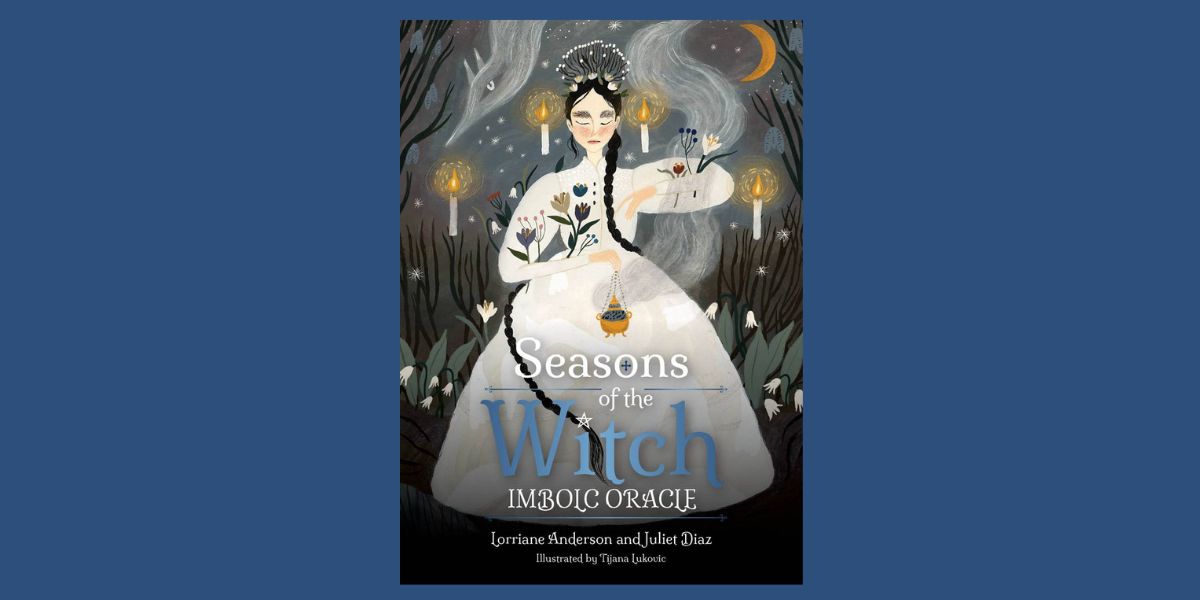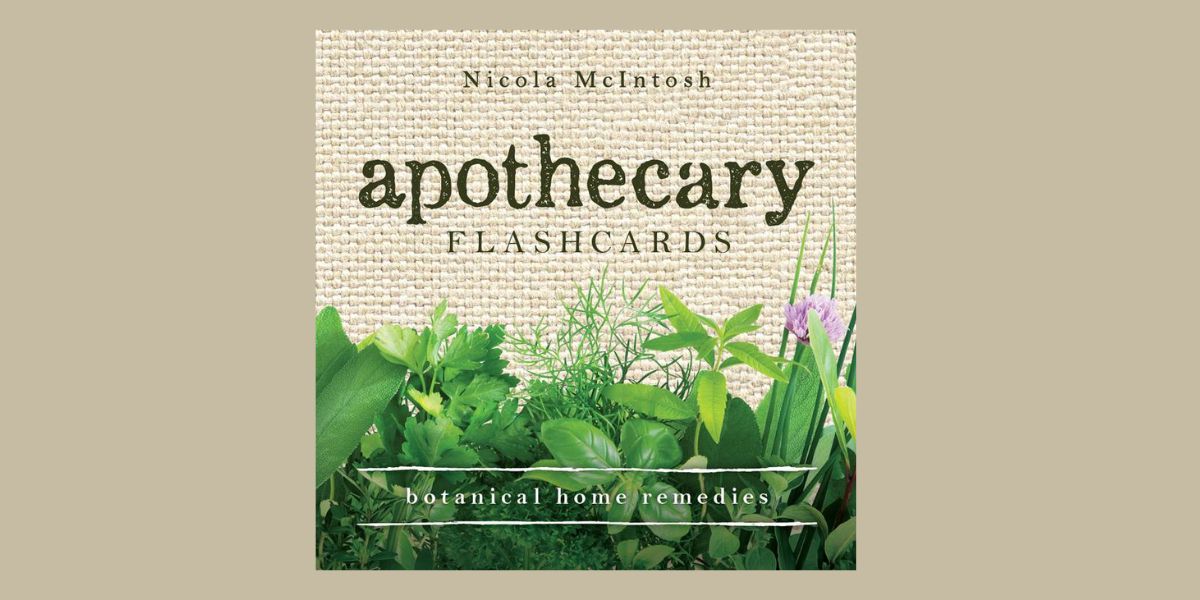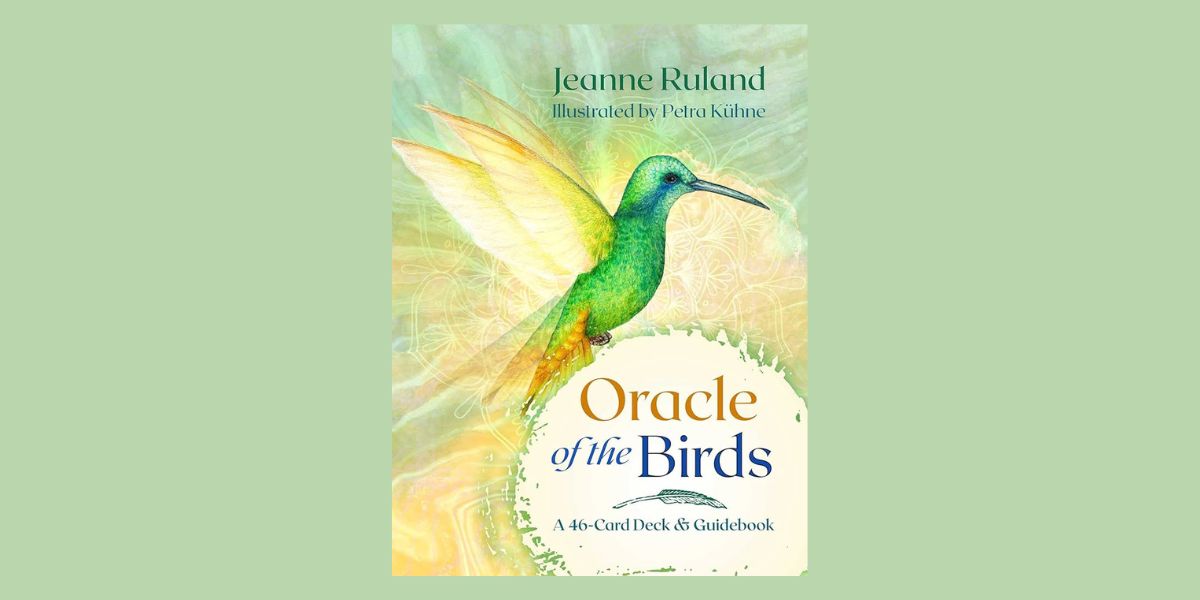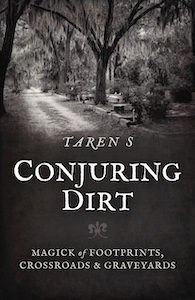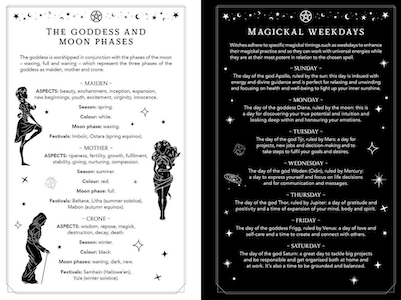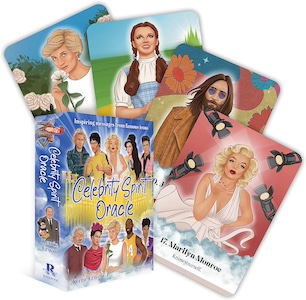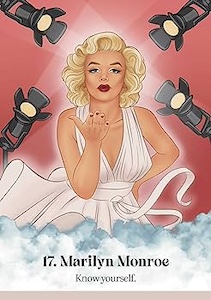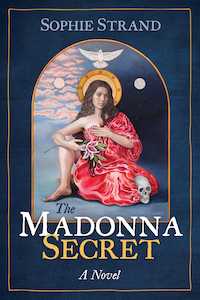
Season of the Witch: Imbolc Oracle, by Lorraine Anderson and Juliet Diaz
Rockpool Publishing, 1922579785, 112 pages, 44 cards, November 2023
In the darkness of winter, Imbolc is a time of fresh starts, hope, and renewal, as we begin to see signs of the spring returning. While others rush to make their new year’s resolution in January, I’ve always known the potent magic in waiting until Imbolc to start crafting my intentions. And this year I’m really excited to have Seasons of the Witch: Imbolc Oracle by Lorraine Anderson and Juliet Diaz to turn to for guidance as I map out my intentions for the upcoming months.
The Season of the Witch oracle series has already moved through Yule, Samhain, and Mabon, and with this deck Anderson and Diaz turn their focus to encapsulating the energy of Imbolc into the next deck in the series. Anderson and Diaz describe how they find Imbolc “to be the most suited for solitary work, a time when you turn inward and focus on your hopes and dreams.”1

“Each card was brought to light with the hope that it would stimulate self-awareness rather than focusing on other people.”2
To better acquaint myself with the deck, I decided to flip through the guidebook before delving into a reading. Following the author’s introductions, there is a list of themes and areas of focus for Imbolc, an overview of how to use the cards, and card spreads. I really liked the authors’ idea of pulling a monthly guiding-light card, photocopying it, and placing it in areas you’ll see throughout the day to remind you of the energy. Anderson and Diaz also describe how after reader feedback from other decks, they decided to shift from invocations to mini messages that give a glimpse of the card’s meaning.
The cards themselves have a calm, tranquil energy. I instantly feel at ease when I’m holding the deck. They shimmer with their navy-blue gilded edges, and the image on the back of the moon with candles surrounding it brings a soft, gentle illumination. The cards’ imagery remind me of the concept of hygge, bringing warming feelings of contentment or well-being. Some card names are Cinnamon Rolls, Casserole, Greenhouse, Amethyst, Snowflakes, Groundhog, Dawn, and Aquarius.

The coloring is a perfect mixture of healing darkness with soft light, reminding readers of the bliss that comes in the quiet stillness of the deep winter, but also honoring the winter blues. In the mix there are plenty of cards that invite the reader to delve into their grief and longing and create a sacred space for healing and transformation to occur. It is only through having the courage to face the dark that we can find the light within again; with this deck, we are safely held to explore our inner realms and wash away the old to pave way for the new.
My first time using this deck I did a one-card pull and got Arts and Crafts. It instantly felt very aligned, as I have been longing to create space in my schedule to do some crafting projects. Recently, I’ve been longing to create a winter vision board, bake and build a gingerbread house, and make my own witch’s ball and/or spell jar. The card felt like an intuitive nudge to follow this whim.
Then reading the message for Arts and Crafts hit home even more. It reads:
“The Arts and Crafts card comes to you when you are trying to manifest your vision using other people’s means and methods instead of creating something for yourself. . . Don’t cut yourself short thinking you don’t have the skill to bring your ideas and visions to life, because skills can be learned and mastered.”3

Recently, I have been relying on other people, hoping their dreams pan out and I fit in somewhere, rather than pursuing my own visions. This card was a gentle reminder of my creativity, from the daily crafts I will start to build to the greater vision of my life that I am now feeling ready to begin tending again.
My next time using this deck was to gain insight into how I could heal an important relationship in my life. I chose the Rosemary bread spread (yum, right?) that the authors warn “is not for the faint of heart”4 as it will reveal honestly if the relationship is better mended or if it has reached its natural conclusion and it’s time to part ways. The positioning of four main cards gives insight into whether or not the relationship should continue, and the cards five-a and five-b are to be read depending on if the answer is “yes” to mend the relationship or “no” to heal and move on.
When I read the first four cards in the spread, I was honestly shocked by the accuracy. It was as though the deck tapped into the situation perfectly and laid before me the truth that I had been unintentionally shielding myself from. The essence of the message was that my partner and I were not in alignment with our higher purpose; I am being non-committal, while he is lacking focus. The fourth card, Peppermint, revealed it was time for a clearing of toxic patterns. (Sidenote: It was interesting that Peppermint came up for me too because it’s an herb I’ve been feeling really called to work with recently!)

From the spread, I determined the message was to mend, and so I read the follow-up card that pretty much pointed to us needing to do some shadow work to overcome these recurring issues. Sharing this information with my partner led to a much-needed discussion about our future, and afterwards we felt more connected than we had in a while. I definitely felt the author’s intention for this deck to help readers focusing on their own inner work rather than other people’s expectations of you helped to restore balance in my relationship.
So far, I think this is my favorite Season of the Witch deck yet. Just like the others, it perfectly captures the essence of the sabbat. But I think Imbolc is often overlooked, as it has a quiet energy compared to some of the other more bold sabbats, such as Samhain and Yule. These cards are a perfect way to attune yourself to the gentle unfolding of Imbolc during the winter. Though, I feel there’s plenty of insight to gain from using them as one feels called throughout the year as well.
Overall, I highly recommend Season of the Witch: Imbolc Oracle. Anderson and Diaz are doing a wonderful job of distilling the essence of the sabbats into these decks. The cards for Imbolc perfectly capture the energy of this season; they are warm and cozy with unexpected depth. This deck will help you to delve into the hidden emotions to reconnect with yourself and determine what’s of true value in your life and worth pursuing as a new beginning.
Alanna Kali is an astrologer, numerologist, and pioneer spirit that loves to explore life through the lens of depth psychology. She has a passion for studying the humanities and social trends. Her academic work is centered upon reuniting body, mind, and spirit through eco-psychology. She loves reading, spending time in nature, and travel.
